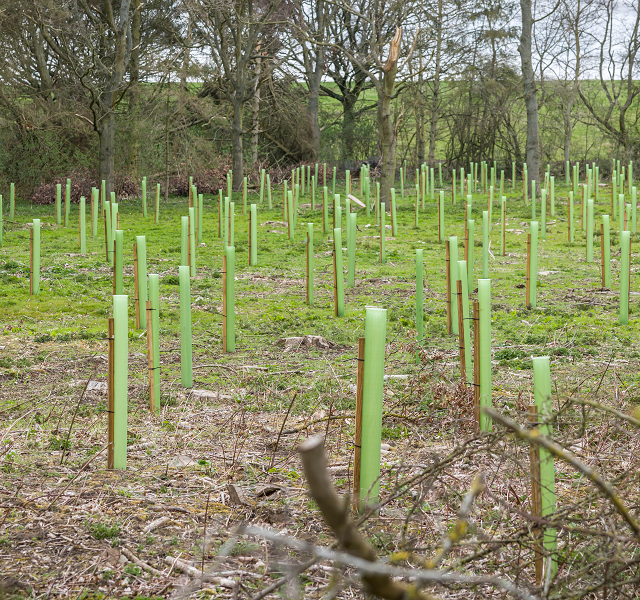Balance required on additionality test for woodland carbon
With just under two months to go until Christmas, most politicians seem to have already written their letters to Santa and all appear to have put trees on their lists. The principal driver is the role that woodland can play in mitigating climate change, because of trees’ ability to sequester carbon from the atmosphere and the offsetting potential that this offers.
Trees are very effective at sequestering carbon, locking it up and pumping out oxygen for us all to breathe, and the right trees grown on the right site can do this very quickly and efficiently, really helping the drive towards net zero. If these trees are productive species, planted and managed correctly, there are other wide-ranging benefits. For example, the timber products produced can be used as a substitute for high carbon cost alternatives such as steel and concrete in the construction sector. This results in buildings with a lower embodied carbon content – the term used to describe all the emissions generated during the construction of a building, as opposed to the ongoing emissions associated with the building being used.
Native woodlands, or others managed on a non-intervention basis, are often slower to establish and start sequestering carbon, but they can potentially lock up more over a longer period of time, and barring disaster, will hold onto it in perpetuity. They also have excellent biodiversity and habitat creation potential.
Woodland Carbon Code
To try and support and incentivise the creation of new woodlands throughout the UK the Government has set up the Woodland Carbon Code (WCC), which is a quality assurance standard for woodland creation projects in the UK, and generates independently verified carbon units. The WCC is endorsed by the International Carbon Reduction & Offset Alliance (ICROA) a global umbrella body for carbon reduction and offset providers in the voluntary market.
The WCC allows project developers to registers their woodland creation projects, to generate either Pending Issuance Units (PIUs) directly after planting, or Woodland Carbon Units (WCUs) once the carbon is sequestered and verified. These units can either be traded with others looking to offset their emissions or retained by the landowner to use against their own emissions if required.
Additionality conundrum
One of the big grey areas at present is the ‘additionality’ tests. Additionality is a key foundation that underpins all voluntary carbon markets, and basically sets out to ensure that projects qualifying for carbon funding, or being used for offsets, would not have gone ahead without this additional income. Put simply, the idea is that if a project makes economic sense without being able to sell the carbon credits, and would have gone ahead anyway, it is not regarded as being additional.
With the increase in timber values, and freehold woodland values, in the UK the commercial viability of productive woodland creation projects has never been stronger, and this can be seen in the prices being paid for good planting land. However, some of these productive woodland creation projects have also managed to qualify under the current WCC additionality tests and generate additional income through the sale of PIUs or WCUs. This has raised questions from those who argue that some of these projects would be economically viable without the additional income stream.
Due to this, the WCC has taken the decision to review its additionality tests to ensure that they can confidently say that the carbon units registered with the code are truly additional, and that the whole process is open to detailed audit and scrutiny. They have engaged an external consultant to undertake this review. The results will be subject to a consultation before the additionality tests are revised.
As an industry we have to be very careful around additionality. If the tests employed are incorrectly calibrated, and projects are eligible that aren’t truly additional there is potential the whole voluntary woodland carbon market in the UK becomes discredited. This would have a disastrous effect on the drive for net zero and the longer term reduction in our emissions.
However, if the additionality criteria swings too far the other way, then only native woodlands would be able to pass the additionality test. This could have serious negative impact on productive woodland creation, which we need to support the rural economy and to address the fact we are the second largest importer of wood products in the world, and there is a global shortage of timber.
We need trees, we need more trees and we need all types of trees. However, we also need a clear and robust additionality testing process from the WCC. One that supports the creation of ‘additional’ new woodlands and doesn’t damage the excellent work that’s already being done to produce the future timber resource of our country.
If you have a project you want to discuss, or would like a bit more information on woodland creation, land values or the Woodland Carbon Code please do not hesitate to get in touch with the John Clegg & Co team.






